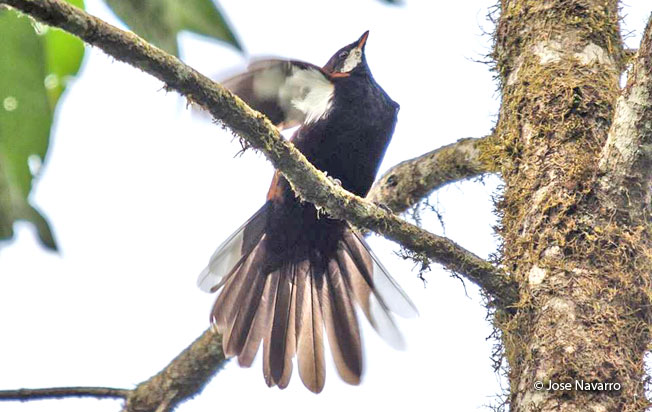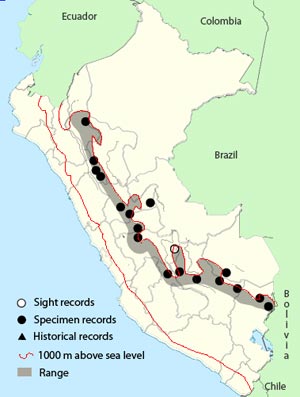Order: Passeriformes | Family: Turdidae | IUCN Status: Least Concern

Age: Adult | Sex: Unknown | Loc. Southeast Peru

Age: Adult | Sex: Unknown | Loc. Abra Patricia, Amazonas

Age: Adult | Sex: Unknown | Loc. Unchog, Huanuco

Age: Adult | Sex: Unknown | Loc. Manu Road, Cuzco
Identification & Behavior: ~23 cm (9 in). The White-eared Solitaire has chestnut upperparts and flanks. The head and the underparts are black. It has a broad white stripe on the sides of the head below the eye. The tail is black with half of the outer tail feathers white. It forages mostly in the subcanopy of humid montane forest. It is unmistakable but see the smaller Andean Solitaire.
Status: The White-eared Solitaire is fairly common but inconspicuous in montane forests of the east slope of the Andes at elevations ranging between 1200-2900 m. It also occurs in Bo.
Name in Spanish: Solitario de Oreja Blanca.
Sub-species: White-eared Solitaire (Entomodestes leucotis), (Tschudi), 1844.
Meaning of Name: Entomodestes: Gr. entoma= insects and ?edestes= eater. leucotis: Gr. leukos= white and ous, otos= ear, otis=-eared.
Distribution Map
 Voice
Voice
 Voice
VoiceReferences:
-
- Species range based on: Schulenberg, T. S., D. F. Stotz, and L. Rico. 2006. Distribution maps of the birds of Peru, version 1.0. Environment, Culture & Conservation (ECCo). The Field Museum. http://fm2.fieldmuseum.org/uw_test/birdsofperu on 03/01/2016.